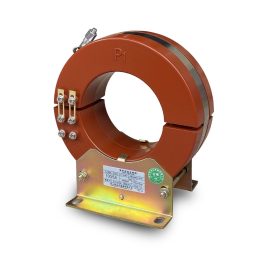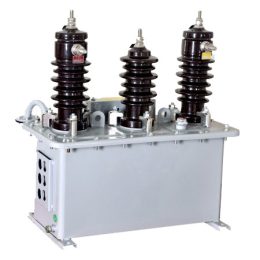Magnetic Saturation in 20kV Voltage Transformers and Its Adverse Effects
20kV voltage transformers are common in power systems, but when magnetic saturation occurs during operation, it can lead to several issues affecting the stability and reliability of the power system. Here, we examine the causes and adverse effects of magnetic saturation in 20kV voltage transformers, along with prevention and mitigation strategies.
Understanding Magnetic Saturation
Magnetic saturation occurs when the magnetic core material of the 20kV transformer reaches its magnetization limit due to excessive current or voltage, resulting in an inability to increase magnetic flux density. When the core reaches saturation, the transformer’s output signal no longer maintains a linear relationship with the input, causing distortions and inaccuracies in measurement.
Adverse Effects of Magnetic Saturation
- Measurement Errors
Magnetic saturation leads to discrepancies between the voltage transformer’s output signal and the actual input signal, resulting in inaccurate measurements. This inaccuracy can impair the functionality of other devices in the system and compromise precise voltage monitoring and control. - Protection Failure
Protection devices within power systems rely on accurate signals from 20kV voltage transformers to detect and act on faults. When magnetic saturation occurs, the transformer’s output may mislead protection devices, resulting in failure to detect faults or inaccurate fault detection. This increases the risk of equipment damage and operational hazards. - System Stability
Distorted voltage measurements from a saturated transformer can negatively impact system stability. Inaccurate voltage data compromises the assessment of system status, potentially affecting system regulation and stability.
Prevention and Solutions
- Proper Selection and Design
Choosing an appropriate model and specification of the 20kV transformer is crucial. Ensuring that the transformer can handle the system’s operational voltage and current helps minimize the risk of magnetic saturation. Effective design and layout also reduce magnetic interference and the likelihood of saturation. - Regular Testing and Calibration
Routine testing and calibration of the 20kV voltage transformer help maintain optimal performance. Regular checks can detect any signs of magnetic saturation, preventing prolonged saturation from distorting measurements. - System Monitoring and Maintenance
Implementing an effective system monitoring mechanism can help detect magnetic saturation promptly, allowing for corrective action. Periodic maintenance and cleaning of the 20kV transformer help ensure it remains in good working condition.
Conclusion
20kV voltage transformers are essential components in power systems, but magnetic saturation can compromise their accuracy and reliability. Through appropriate transformer selection, regular testing and maintenance, and robust monitoring, the occurrence of magnetic saturation can be minimized, ensuring the stable operation of the power system and the effectiveness of equipment protection.
- Working Principle of Zero-Sequence Current Transformers
- Causes of 35KV Current Transformer Damage
- 3 Voltage Transformer Faults and Solutions: Ensuring Accurate Measurement and Protection
- 4 Common Causes of 10kV Three-Phase Five-Pole Voltage Transformer Failures and Solutions
- Zero-Sequence Current Transformers vs. Standard Current Transformer
- Causes and Solutions for False Fault Alarms in Zero-Sequence Current Transformers



